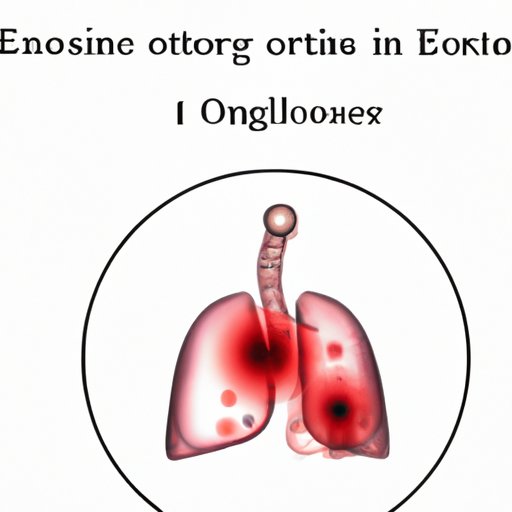
Introduction
Eosinophilic esophagitis (EOE) is a relatively newly recognized disease that affects the esophagus. In recent years, there has been debate among medical professionals about whether or not EOE is an autoimmune disease. It is important to understand EOE and its possible connections to autoimmune disease, as this can lead to better diagnosis and treatment options for those affected.
Understanding EOE: Symptoms, Causes, and Treatment Options
EOE is a chronic inflammatory disease that affects the esophagus. It is usually caused by an allergic reaction to certain foods or environmental allergens. Symptoms can include difficulty swallowing, chest pain, and heartburn. In severe cases, patients may vomit blood or have signs of acute gastrointestinal bleeding.
The exact cause of EOE is still unknown, but it is thought to be related to an overproduction of eosinophils, a type of white blood cell. Treatments for EOE can vary depending on the severity of symptoms, but typically include dietary changes, medication, and in some cases, surgery.
Autoimmune Diseases: Is EOE One of Them?
Autoimmune diseases occur when the body’s own immune system mistakenly attacks healthy cells and tissues. Examples of autoimmune diseases can include lupus, rheumatoid arthritis, and multiple sclerosis. While EOE is not strictly classified as an autoimmune disease, recent research has suggested that there may be a connection between EOE and autoimmune disease.
Researchers have found evidence of autoimmune activity in patients with EOE, including the presence of autoantibodies and other immune system markers. However, there is still some debate among medical professionals as to whether or not EOE should be considered an autoimmune disease.
EOE vs. Other Gastrointestinal Disorders: How to Differentiate
There are a number of gastrointestinal disorders that can have similar symptoms to EOE, including gastroesophageal reflux disease (GERD) and peptic ulcers. To differentiate EOE from other disorders, doctors may perform endoscopy, biopsy, or other tests to look for the characteristic eosinophil infiltration in the esophagus associated with EOE.
Debunking Common Myths about EOE and its Connection to Autoimmune Disease
There are a number of common myths about EOE and its connection to autoimmune disease. For example, some people believe that EOE is caused by stress, or that it can be cured by medication alone. However, the truth is that while stress may contribute to symptoms of EOE, it is not a direct cause of the disease.
Similarly, while medication can be an important part of treatment for EOE, it is not a cure, and lifestyle changes such as dietary modifications are often necessary for long-term management of the disease.
The Role of Diet and Lifestyle Changes in Managing EOE
Diet and lifestyle changes can play an important role in managing EOE. Some patients may be put on a strict elimination diet where they must avoid specific foods that trigger their symptoms. In other cases, patients may be advised to avoid eating too close to bedtime or to elevate the head of their bed when sleeping in order to reduce the risk of acid reflux.
There are a number of other lifestyle changes that can be helpful for managing EOE, including stress reduction techniques such as meditation or yoga, and regular exercise to help maintain a healthy weight.
EOE and Autoimmune Disease: Current Research and Future Directions
Research on the connection between EOE and autoimmune disease is ongoing. Some studies have suggested that there may be a genetic predisposition to developing both EOE and autoimmune disease, while others have focused on the role of immune system dysregulation in both disorders.
Future research will likely focus on understanding the specific mechanisms underlying the connections between EOE and autoimmune disease, as well as developing new therapies that can help to better manage symptoms and prevent long-term complications.
Conclusion
EOE is a complex disease that can have serious consequences for those affected. While the relationship between EOE and autoimmune disease is still not fully understood, research is ongoing, and there is hope that new treatments and management strategies will emerge in the future.
If you or someone you know is experiencing symptoms of EOE, it is important to seek medical advice and to work with a qualified healthcare professional to develop a customized treatment plan that takes into account the unique needs and challenges of the individual patient.





